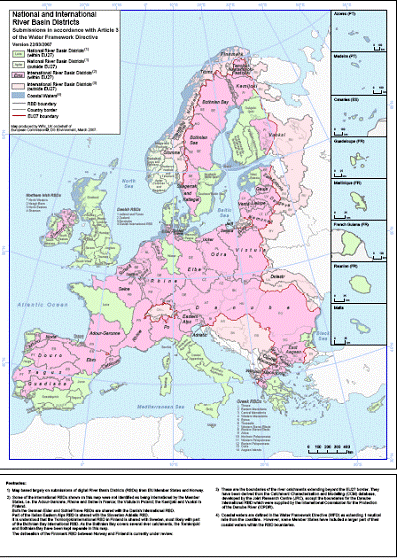Researchers and practitioners in the field of regional studies have long promoted spatial approaches to policy, development and the application of public sector resources. In Europe, concepts such as territorial cohesion, place-based approaches and integrated spatial planning all promote spatial sensitivity in policy-making and are critical of the ‘spatial blindness’ of approaches which do not explicitly take the spatial dimension into account. Within the European context, spatial approaches to policy are concerned with spatial inequalities, the spatial impacts of sectoral policies and regional diversity. A central concern is how to work with deal with processes which cross the political and administrative boundaries of nation-states, whether at international or sub-national levels. How do policy-makers deal with functional regions which cross the borders of two or more administrative territories?
International (pink) and National (green) River Basin Districts in Europe: An Alternative Regional Geography (Source: European Commission DG Environment)
Recently, however environmental
policy has become a significant driver of spatial thinking in Europe and
elsewhere (see recent reports from the European Environment Agency). Through the requirements of Strategic Environmental Assessment for example,
policy-makers and practitioners are required to consider the ‘upstream’ and
‘downstream’ environmental impacts of intended projects and policy measures. It
is perhaps within the area of water resource management, however that the
adoption of spatial approaches is most advanced. The EU Water Framework Directive introduced in 2000 requires the river basin to be adopted as the
principal unit of management, regardless of whether the resulting river basin
districts cross international, regional or local administrative boundaries.
More than ten years later, practitioners are still struggling to adapt to the
requirements of the river basin management approach and the need to ‘think
outside the box’ which this implies. Nevertheless river basin management is an
important, innovative example of a spatial approach in policy and practice
which should perhaps receive more attention from the regional studies
community.
